Thermalhydraulics & Gasification Laboratory
Department of Mechanical Engineering
Indian Institute of Technology Guwahati
back to top
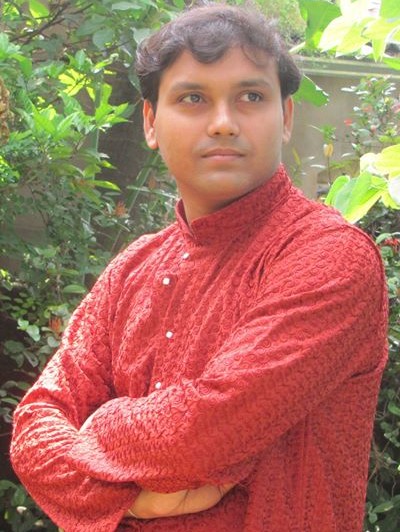
 |
+91-361-258 3431 (O) +91-361-258 5431 (R) |
|||
 |
+91-361-258 2699 | |||
 |
dnbasu@iitg.ac.in dipankar.n.basu@gmail.com |
|||
 |
 |
 |
 |
|
Completed doctoral students
 Dr. Vijay K Mishra Dr. Vijay K Mishra |
 Dr. Daya Shankar Dr. Daya Shankar |
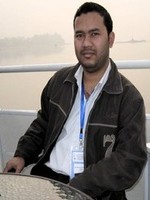 Dr. Milan KS Sarkar Dr. Milan KS Sarkar |
 Dr. Kiran Saikia Dr. Kiran Saikia |
 |
Dr. Vijay Kumar Mishra |
||
| Thesis title | :: | Estimation of Parameters in Conduction-Radiation Heat Transfer in Porous Media | |
| Co-supervisor | :: | Prof. Subhash C Mishra, IIT Guwahati | |
| Defended on | :: | February 15, 2017 | |
| Now affiliated to | :: | Kalinga Institute of Industrial Technology Bhubaneswar, Odisha 751024, India |
|
| Contact details | :: | mishra.vdm@gmail.com vijay.mishrafme@kiit.ac.in |
|
Publications in International Journals (from the thesis) | |||
| |||
Publications in International Conference Proceedings (from the thesis) | |||
| |||
Abstract of Thesis | |||
|
Development of thermal systems like a porous radiant burner, heat exchangers, insulations, etc., quantitative knowledge of heat and/or mass transfer, temperature field are essential. With geometric details, thermo-physical and optical properties, and initial and boundary conditions known, the desired results, viz., temperature and heat flux distributions are known by numerically solving a set of governing equations. However, when a thermal system is designed, a priori knowledge of some or all of the geometric parameters, and thermos-physical and optical properties of the material, and even initial and/or boundary conditions may not be known. Experimental route to optimize these parameters with trial and error approach for the desired outcome is not scientific. Recourse of an inverse analysis is the most preferred option by the scientific community. With thermo-physical properties and initial and boundary conditions known, calculations of the desired velocity field, temperature field or heat and mass flow rates, come under solving a direct problem. However, when either of the desired quantities (temperature, velocity fields, heat and mass transfer rates), and one or more of the properties or initial or boundary conditions are unknown, problem becomes an inverse one. In the direct problem, causes are known, and getting the outcomes are straightforward. On the contrary, in inverse problems, the outcome is known, but not the cause(s). Estimation of cause(s) is relatively, a difficult task. Mathematically, inverse problems are ill-posed. With even a slight variations in governing parameters, solution goes astray. Over the last five decades, many researchers have studied heat and mass transfer in porous media. They have considered different geometric and thermal configurations. However, study on estimation of parameters in a combined mode conduction and radiation heat transfer with or without combustion is scarce. With its application in porous radiant burners in mind, the present work, is aimed at heat transfer analysis as well as estimation of thermo-physical and optical properties in a combined mode conduction and radiation heat transfer in porous media. With aforementioned objective in mind, in the present work, different configurations like single stage, two stage are considered. Different geometries like 1D planar, 2D rectangular, 2D axisymmetric cylindrical are also considered. Also, different optimization algorithms in the inverse analysis are used, such as genetic algorithm, global search algorithm, pattern search algorithm, simulated annealing etc. | |||
 |
Dr. Daya Shankar |
||
| Thesis title | :: | Analysis and Scaling of Coupled Neutronic Thermal Hydraulic Instabilities of Supercritical Water-Cooled Reactor | |
| Co-supervisor | :: | Prof. Manmohan Pandey, IIT Guwahati | |
| Defended on | :: | October 08, 2018 | |
| Now affiliated to | :: | School of Technology, Woxsen University Hyderabad, Telangana 502345, India |
|
| Contact details | :: | iitdaya@gmail.com daya.shankar@woxsen.edu.in |
|
Publications in International Journals (from the thesis) | |||
| |||
Publications in International Conference Proceedings (from the thesis) | |||
| |||
Abstract of Thesis | |||
|
Present thesis work primarily focuses on the analysis of flow instability in one of the most powerful concepts under Generation-IV nuclear reactors technology, namely, Supercritical water-cooled reactor (SCWR). Safety is the primary concern in the any nuclear reactors. Flow instabilities are one of a kind on which the current researches are going on. The reason behind that is the large density difference of the fluid through the coolant channel. Therefore, a downscaled model is required to study the complex phenomena in laboratory conditions; hence a scaled method is proposed here which is useful for the study of both the natural as well as the forced circulation system. For further analysing about the stability of the system, a simple but quite effective model has been developed as the Lumped Parameter Model (LPM). Using this model, a linear and nonlinear stability analysis have been done for the various parametric conditions. Moreover, the stability analysis due to the seismic effects on SCWR has also been considered by using the same LPM. Two types of seismic wave model have been taken into account for the analysis, first the sinusoidal acceleration and the other more realistic Kanai–Tajimi model which is used for more accurate simulation of the seismic wave. These methods are first time introduced in the SCWR. | |||
 |
Dr. Milan Krishna Singha Sarkar |
||
| Thesis title | :: | Computational and Experimental Assessment of Supercritical Natural Circulation Loop: Steady-state Thermalhydraulics and Stability Aspects | |
| Defended on | :: | January 25, 2019 | |
| Now affiliated to | :: | Budge Budge Institute Of Technology Budge Budge, West Bengal 700137, India |
|
| Contact details | :: | mkssarkar@gmail.com | |
Book Chapter (from the thesis) | |||
| |||
Publications in International Journals (from the thesis) | |||
| |||
Publications in International Conference Proceedings (from the thesis) | |||
| |||
 |
Dr. Kiran Saikia |
||
| Thesis title | :: | Experimental and Numerical Investigations of Instabilities Generated in Parallel Channel Natural Circulation Boiling System | |
| Co-supervisor | :: | Prof. Manmohan Pandey, IIT Guwahati | |
| Defended on | :: | November 27, 2020 | |
| Contact details | :: | saikiakiran86@gmail.com | |
Publications in International Journals (from the thesis) | |||
| |||
Publications in International Conference Proceedings (from the thesis) | |||
| |||
Abstract of Thesis | |||
|
The two-phase natural circulation process is regarded as an efficient mode of energy transmission in boiling systems owing to the passive safety and absence of prime movers. However, flow instability is a vital issue in natural circulation boiling systems.This thesis explores a parallel channel
natural circulation boiling system to identify relevant thermal-hydraulic characteristics. The focus of this study is on the Parallel channelNatural Circulation Test Facility(PCNCTF), which is a scaled-down version of the Advanced Heavy Water Reactor (AHWR). Unlike regular parallel channel
systems that generally have an even number of channels (mostly two channels), PCNCTF is a three-channel systemthatadds complexities to its dynamics.The thermal-hydraulic instabilities associated with this system are evaluated experimentally, as well as numerically.
During boiling operations, the oscillatory behavior of the mass flow transients is observed,which is characterized as density wave oscillations (DWO). The responseof flow rate transients subjected to different system pressure, power inputs,and inlet subcooling are thoroughly investigated.
Typically, a Type-Idensity wave oscillation (DWO) is identified by large amplitude out-of-phase oscillations with multiple harmonic frequencies. Usually, the inception of instability can be delayed by first pressurizing the loop externally with N2before applying heat. At constant system pressure,
the amplitude and frequency of flow instability can be controlled by regulating input power and inlet subcooling. | |||
 Dr. Bhaskarjyoti Sarma Dr. Bhaskarjyoti Sarma |
 Dr. Aritra Mukherjee Dr. Aritra Mukherjee |
 Dr. Nitesh Kumar Dr. Nitesh Kumar |
 Dr. Sambit Majumder Dr. Sambit Majumder |
 |
Dr. Bhaskarjyoti Sarma |
||
| Thesis title | :: | Experimental Characterization of Field-Induced Droplet Dynamics | |
| Co-supervisor | :: | Prof. Amaresh Dalal, IIT Guwahati | |
| Defended on | :: | February 09, 2021 | |
| Now affiliated to | :: | Post-doctoral research fellow Cooling Technologies Research Center, Purdue University |
|
| Contact details | :: | bhaskar.sarma25@gmail.com | |
Publications in International Journals (from the thesis) | |||
| |||
Publications in International Conference Proceedings (from the thesis) | |||
| |||
Publications in National Conference Proceedings (from the thesis) | |||
| |||
Abstract of Thesis | |||
|
The manipulation of a discrete liquid droplet or a group of droplets with or withoutthe deformation of the liquid-vapour interface in the presence of an externally stim-ulating field is an integral part ofLab-On-Chipdevices, which in turn determinesthe performance of target applications. A detailed appraisal of the underlying rich physics associated with the deformation and/or disruption of the continuous two-phase interface and the behaviour of the contact line during the actuation of adroplet over an open surface or inside a closed channel, engendered in the presenceof an external force, apparently contribute towards enhancing the efficacy of numerous microfluidics applications. In this regard, a plethora of complex hydrodynamicfeatures during actuation, mixing, merging, or splitting of discrete droplets havebeen unfurled by the scientific community over the past years. However, owing tothe growing demand for microfluidics platforms in a host of cutting-edge engineeringand biomedical applications, it has become necessary to assess the existing or noveldroplet-based physical systems more comprehensively. Thanks to the advancementof high-speed visualization tools and computational techniques, the latter task hasbecome easier nowadays. The present thesis work draws enormous motivation from the aforementioned observations and makes an honest attempt to uncover the richphysics associated with the behaviour of single liquid droplets in the presence of ex-ternal potentials, such as electric field, magnetic field, imposed inertia, etc., in a fewinteresting and unexplored physical systems. The problems addressed within the scope of the present thesis include the growth dynamics of a droplet from a yarn,softness mediated magnetowetting of sessile ferrofluid droplets, electric-discharge-mediated atomization of a conducting sessile droplet, and impact dynamics of vis-cous droplets on a superhydrophobic surface. Overall, the focus has been laid on experimentally characterizing the temporal evolution of the shape and contact line(s)during the growth/deformation phase of a droplet and the subsequent atomizationdynamics of the primary droplet. Apart from the externally applied field, the effectof thermophysical properties of the liquid and properties of the substrate in contact have also been characterized during the systematic experimental investigation of theaforementioned systems. High-speed imaging/videography techniques are used pri-marily to analyze the intricate physical details of the systems under consideration.Also, the experimental results are strengthened by scaling analysis and numerical simulations. The comprehensive experimental analysis of each system unveils several interesting hydrodynamic features, such as liquid jet formation, crown formation,bursting ejecta sheet, lamella ejection, capillary pinch-off, high-speed hair-like jetsemanating from a parent droplet exposed to different external stimulations. The aforementioned flow morphologies contribute enormously towards the effective at-omization of the parent droplet, desirable for many microfluidics applications. Thecontributions from this thesis work are expected to pave the way for several newresearch avenues in microfluidics. | |||
 |
Dr. Aritra Mukherjee |
||
| Thesis title | :: | Development of Pseudopotential-Based LBM Solver to Explore the Microdynamics of Liquid-Vapor Phase Change Processes | |
| Co-supervisor | :: | Dr. Pranab K Mondal, IIT Guwahati | |
| Defended on | :: | August 27, 2022 | |
| Contact details | :: | ammaritra@gmail.com | |
Publications in International Journals (from the thesis) | |||
| |||
Publication in International Conference Proceedings (from the thesis) | |||
| |||
Abstract of Thesis | |||
|
The pseudopotential-based LB multiphase model has enormous potential in the simulation of phase-change heat transfer problems. It facilitates the natural development and migration of interfaces during the multiphase simulation as well as saves a lot of computational time. Along with these, this model enjoys several advantages like simple
implementation procedure, excellent parallelizability, and easy applicability in complex domains. Due to these superiorities, it is becoming increasingly popular among researchers working on numerical simulation of multiphase flow. A pseudopotential model based thermal multiphase flow solver is developed as this thesis work, which is employed
in several phase change heat transfer problems related to boiling and condensation. | |||
 |
Dr. Nitesh Kumar |
||
| Thesis title | :: | Numerical and Experimental Investigation of Minichannel Heat Sinks with Supercritical Working Fluids | |
| Defended on | :: | April 13, 2023 | |
| Contact details | :: | enggnitesh2014@gmail.com | |
Book Chapter (from the thesis) | |||
| |||
Publications in International Journals (from the thesis) | |||
| |||
Publication in International Conference Proceedings (from the thesis) | |||
| |||
Abstract of Thesis | |||
|
The rapid advancement of high performance tiny electronic devices has been sparked by the growing dependence of modern human life on digitization and artificial intelligence. To ensure dependable performance during the full designated operating regime as well as a satisfactory life term, designers now face the additional problem of thermal management
due to the sharp increase in the power density requirements for such equipment. Heat generation is an irreversible process, and it must be removed for components to function continuously. Since the temperature rise in the circuits is the primary cause of component failures, the thermal energy generated during operation needs to be effectively reduced for
the components to operate continuously. As a result, a significant amount of study has been focused on the evaluation of alternative working fluids as well as the creation and augmentation of effective cooling strategies over the past ten years. The high area-to-volume ratio of a miniaturised or mini-channel heat sink (MCHS) and the favourable thermophysical
properties of the medium have been identified as two factors that make this option particularly enticing. | |||
 |
Dr. Sambit Majumder |
||
| Thesis title | :: | Development of a Partially Saturated Cells based Lattice Boltzmann Solver for Thermo-Fluidic Applications | |
| Co-supervisor | :: | Dr. Ganesh Natarajan, IIT Pallakad | |
| Defended on | :: | May 26, 2023 | |
| Now affiliated to | :: | Department of Mechanical Engineering NIT Meghalaya, Shillong-793003, Meghalaya, India |
|
| Contact details | :: | sambit.majumder@gmail.com sambit.majumder@nitm.ac.in |
|
Publications in International Journals (from the thesis) | |||
| |||
Publication in International Conference Proceedings (from the thesis) | |||
| |||
Abstract of Thesis | |||
|
This thesis is devoted to the development of a robust and accurate partially saturated cells (PSC) based lattice-Boltzmann (LB) solver for incompressible flows and its application to conjugate heat transfer process. The lattice-Boltzmann (LB) method has emerged as a promising alternative to the conventional Navier-Stokes solvers in the last two
decades. Despite certain promising advantages, the conventional treatment of boundary conditions on the curved surfaces using LB approaches suffer staircase representation of the surface. This disparity gets exacerbated in moving boundary problems with continuous interchange of fluid and solid lattice nodes necessitating refilling algorithms at
each time, and leads to an increased computational expense. Hence, the need for a fast and robust computational framework for moving body problems has led to the emergence of non-body conformal methods, like the coupled immersed boundary-lattice Boltzmann (IB-LB) method, over the last two decades. Recently, one such variant of the IB-LB method,
namely the partially saturated computational cells (PSC) method, has evolved as a promising numerical framework for several moving boundary applications. The key advantage of the technique is that, it employs a unified evolution equation for all media (solid and fluid) present in the computational domain comprising a weighting function based on
solid volume fraction and an additional solid collision operator. The latter two elements of the PSC technique are responsible for affecting the boundary conditions to be imposed on the solid body, which may be stationary or moving. | |||
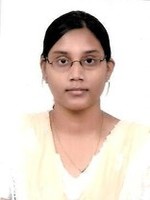 Dr. Shikha Bhuyan Dr. Shikha Bhuyan |
 Dr. Tanuj Srivastava Dr. Tanuj Srivastava |
 Dr. Ashok K Gond Dr. Ashok K Gond |
 |
Dr. Shikha Bhuyan |
||
| Thesis title | :: | Numerical Investigations of Incompressible Buoyancy-driven Flows over Wide Parametric Ranges using Lattice Boltzmann Method | |
| Defended on | :: | May 03, 2024 | |
| Now affiliated to | :: | Department of Mechanical Engineering Tezpur University, Tezpur, Assam 784028, India |
|
| Contact details | :: | shikhabhuyan@gmail.com shikhabhuyan@iitg.ac.in |
|
Publication in International Conference Proceedings (from the thesis) | |||
| |||
Publication in National Conference Proceedings (from the thesis) | |||
| |||
Abstract of Thesis | |||
|
This thesis presents a practical and significant advancement in the Lattice Boltzmann Method (LBM) for buoyancy-driven flow in a single fluid phase. Utilizing the D2Q9 lattice and the LBGK method in two dimensions, the developed LBM codes demonstrate excellent performance across a wide range of
problems. Special attention is given to ensuring accurate and realistic parameterizations, thoroughly validated both qualitatively and quantitatively through rigorous exercises. The thesis begins by validating the newly developed LBM code through simulations of various benchmark isothermal and thermal flow problems.
Next, the thermal lattice Boltzmann method (TLBM) is applied to study natural convection problems. The study introduces non-Boussinesq simulations, considering temperature-dependent fluid properties, and compares them to the traditional Boussinesq approach. The results reveal that non-Boussinesq simulations exhibit
higher values of entropy generation and Nusselt numbers, reflecting a more accurate representation of fluid behavior. Furthermore, the role of fluid friction in entropy generation is examined, and it is found that as Ra increases, the contribution of entropy generation due to fluid friction becomes more prominent,
exceeding that of heat transfer at a critical Ra value of 106 . This highlights the increasing significance of fluid friction in overall entropy production, particularly beyond the critical Ra. | |||
 |
Dr. Tanuj Srivastava |
||
| Thesis title | :: | Numerical and Experimental Investigations of Nonlinear Dynamics and Heat Transfer Deterioration in Supercritical Natural Circulation Loop | |
| Defended on | :: | September 30, 2024 | |
| Now affiliated to | :: | Department of Mechanical and Aerospace Engineering NIMS University, Rajasthan, Jaipur – 303121, India |
|
| Contact details | :: | tanujsrivastava28@gmail.com srivasta@iitg.ac.in |
|
Book Chapter (from the thesis) | |||
| |||
Publications in International Journals (from the thesis) | |||
| |||
Publication in International Conference Proceedings (from the thesis) | |||
| |||
Abstract of Thesis | |||
|
The natural circulation loop (NCL), despite its complex mathematical complexity, points to an efficient way for energy transfer from a high-temperature source to a low-temperature sink without coming into contact. The primary force behind any natural circulation system is the buoyancy force caused by the density
gradient. The operating range of single-phase NCLs is constrained by saturation temperature and low flow rate, whereas two-phase loops are highly concerned about the possibility of dry-out and the emergence of different flow regimes with divergent heat transfer behaviour. Due to its strong capacity for heat
transfer and significant volumetric expansion, supercritical fluid unveils a strong alternative by combining the benefits of single- and two-phase versions. In conjunction with this, the idea of a supercritical natural circulation loop (sNCL) has emerged as one of the most important endeavours for generation-IV
nuclear reactors in the twenty-first century. | |||
 |
Dr. Ashok K Gond |
||
| Thesis title | :: | Computational Appraisal of Supercritical Heat Transfer in Novel Annular Channel Designs and Development of An Experimental Facility | |
| Co-supervisor | :: | Prof. Amaresh Dalal, IIT Guwahati | |
| Defended on | :: | November 21, 2025 | |
| Contact details | :: | ashok1994@iitg.ac.in | |
Publications in International Journals (from the thesis) | |||
| |||
Publication in International Conference Proceedings (from the thesis) | |||
| |||
Abstract of Thesis | |||
|
Supercritical fluids, such as supercritical CO2 (sCO2), exhibit pronounced variations in thermophysical properties near the pseudocritical region, resulting in complex heat transfer behaviour, including both enhancement and deterioration (HTD). This thesis presents an integrated numerical and experimental investigation focused on improving heat transfer performance and mitigating HTD through innovative annular channel designs, mechanistic insights, and advanced scaling strategies. A novel double-cooled annular channel is introduced, demonstrating significantly higher heat transfer coefficients and lower wall temperatures than conventional annuli, and completely eliminating HTD across all examined conditions. Variable-area annular channels, including converging and diverging geometries, are also evaluated under uniform and non-uniform heating, showing enhanced turbulence, improved wall-to-fluid mixing, and full suppression of HTD. Mechanistic analysis reveals that heat transfer enhancement is driven by specific heat peaks within the buffer region, whereas HTD originates from buoyancy-induced M-shaped velocity profiles that impair near-wall mixing. To extend applicability beyond CO2, a new fluid-to-fluid scaling framework based on pseudosaturated and pseudo-saturated liquid and gas point analogies is developed, yielding substantially improved prediction accuracy compared with conventional pseudocritical scaling. Finally, a high-pressure experimental facility for sCO2 flow in double-cooled annular channels is designed and commissioned, providing a robust platform for future validation studies and advanced supercritical heat transfer research. | |||
Continuing doctoral students
 Mr. Biswajyoti Baishya Mr. Biswajyoti Baishya |
 |
Mr. Biswajyoti Baishya |
||
| Research field | :: | Development of Multiphase Lattice Boltzmann Solver for Phase-change Problems | |
| Latest action | :: | State-of-the-Art Seminar on June 14, 2022 | |
| Contact details | :: | baishyabiswajyoti@gmail.com bbiswajyoti@iitg.ac.in |
|
Publications in International Conference Proceedings (from the thesis) | |||
| |||
Completed Masters' students
 Ms. Urmi S Tejaswini Ms. Urmi S Tejaswini |
 Mr. Laxmikant S Korade Mr. Laxmikant S Korade |
 Dr. Abhilash Tilak Dr. Abhilash Tilak |
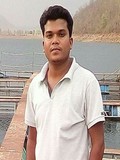 Mr. Yogesh Ratre Mr. Yogesh Ratre |
 Mr. Mayur Krishnani Mr. Mayur Krishnani |
 Mr. Satyendra N Baro Mr. Satyendra N Baro |
 |
Ms. Urmi S Tejaswini |
||
| Thesis title | :: | CFD Investigation of Heat Transfer Characteristics and Scaling of Supercritical Fluid Systems | |
| Co-supervisor | :: | Prof. Manmohan Pandey, IIT Guwahati | |
| Defended on | :: | May 30, 2013 | |
| Presently at | :: | GE Aviation, Bengaluru, India | |
Publication in International Journals (from the thesis) | |||
| |||
Publications in International Conference Proceedings (from the thesis) | |||
| |||
 |
Mr. Laxmikant S Korade |
||
| Thesis title | :: | Computational Investigation of the Effect of Infiltration Heat Recovery through A Building Envelope on Indoor Air Flow Pattern | |
| Defended on | :: | June 03, 2014 | |
 |
Dr. Abhilash Tilak |
||
| Thesis title | :: | Nonlinear Stability Analysis and Dynamic Performance Evaluation of a Reactangular Supercritical Natural Circulation Loop | |
| Defended on | :: | June 17, 2014 | |
| Presently at | :: | Assistant Professor, BITS Pilani, KK Birla Goa Campus | |
Publications in International Journals (from the thesis) | |||
| |||
Publication in International Conference Proceedings (from the thesis) | |||
| |||
 |
Mr. Yogesh K Ratre |
||
| Thesis title | :: | Investigation of the Effect of Channel Inclination on Adiabatic Flow Pattern Maps for Small Diameter Channel: An Experimental Study | |
| Defended on | :: | June 30, 2014 | |
| Presently at | :: | Chhattisgarh State Forest Services | |
 |
Mr. Mayur Krishnani |
||
| Thesis title | :: | Computational Stability Appraisal of Single-phase Natural Circulation Loop | |
| Defended on | :: | June 17, 2015 | |
| Presently at | :: | Oil & Natural Gas Corporation Ltd. | |
Publications in International Journals (from the thesis) | |||
| |||
 |
Mr. Satyendra N Baro |
||
| Thesis title | :: | Development and Experimental Investigation on a Supercritical Natural Circulation Loop | |
| Defended on | :: | July 14, 2015 | |
 Dr. Harshad S Gaikwad Dr. Harshad S Gaikwad |
 Mr. Chetan Borole Mr. Chetan Borole |
 Mr. Pushkin Mittal Mr. Pushkin Mittal |
 Mr. Sujeet Kaushik Mr. Sujeet Kaushik |
 Mr. Uddipta Singha Mr. Uddipta Singha |
 Dr. Sambit Majumder Dr. Sambit Majumder |
 |
Dr. Harshad S Gaikwad |
||
| Thesis title | :: | Some Aspects of Microscale Thermo-Fluidic Transport | |
| Co-supervisor | :: | Dr. Pranab K Mondal, IIT Guwahati | |
| Defended on | :: | June 22, 2016 | |
| Presently at | :: | Research scholar, IIT Guwahati | |
Publications in International Journals (from the thesis) | |||
| |||
Publication in International Conference Proceedings (from the thesis) | |||
| |||
 |
Mr. Chetan Borole |
||
| Thesis title | :: | Computational Code Development for Simulation of Particle Sedimentation using Lattice Boltzmann Method | |
| Defended on | :: | June 23, 2016 | |
| Presently at | :: | Johnson Controls-Hitachi Air Conditioning India Ltd. | |
Publication in International Conference Proceedings (from the thesis) | |||
| |||
 |
Mr. Pushkin Mittal |
||
| Thesis title | :: | Analysis of Steric Effects on Flow through a Micro-channel using Slip Boundary Condition | |
| Co-supervisor | :: | Dr. Pranab K Mondal, IIT Guwahati | |
| Defended on | :: | June 02, 2017 | |
| Presently at | :: | Mercedes-Benz Research & Development India Private Limited | |
 |
Mr. Sujeet Kaushik |
||
| Thesis title | :: | Computational Investigation of Heat Transfer Deterioration in a Supercritical CO2-driven NCL | |
| Defended on | :: | June 27, 2017 | |
 |
Mr. Uddipta Singha |
||
| Thesis title | :: | Stability Analysis and Dynamic Response of a Boiling Channel using a Lumped Parameter Model | |
| Defended on | :: | June 28, 2017 | |
| Presently at | :: | Research scholar, IIT Bombay | |
 |
Dr. Sambit Majumder |
||
| Thesis title | :: | Development of an Immersed Boundary-Lattice Boltzmann Solver | |
| Co-supervisor | :: | Dr. Ganesh Natarajan, IIT Guwahati | |
| Defended on | :: | July 06, 2017 | |
| Presently at | :: | Research scholar, IIT Guwahati | |
Publication in International Conference Proceedings (from the thesis) | |||
| |||
 Mr. Pankaj Kaushik Mr. Pankaj Kaushik |
 Mr. Arnab Ghosh Mr. Arnab Ghosh |
 Ms. Alisha Daimari Ms. Alisha Daimari |
 Mr. Manjul K Mishra Mr. Manjul K Mishra |
 Mr. Vijay B Shahapure Mr. Vijay B Shahapure |
 Mr. Atul Bhardwaj Mr. Atul Bhardwaj |
 |
Mr. Pankaj Kaushik |
||
| Thesis title | :: | Computational Analyses of Single-phase and Supercritical Natural Circulation Loop | |
| Defended on | :: | June 08, 2018 | |
| Presently at | :: | Cadila Pharmaceuticals Limited | |
 |
Mr. Arnab Ghosh |
||
| Thesis title | :: | Development of a Parallelized Immersed Boundary - Lattice Boltzmann Solver for Fluid-Particle Interactions | |
| Co-supervisor | :: | Dr. Ganesh Natarajan, IIT Guwahati | |
| Defended on | :: | June 22, 2018 | |
| Presently at | :: | Research scholar, Nederlandse Organisatie voor Wetenschappelijk Onderzoek | |
Publication in International Conference Proceedings (from the thesis) | |||
| |||
 |
Ms. Alisha Daimari |
||
| Thesis title | :: | Computational Appraisal of Enhancement in Mixing with the Use of Baffles in Y-junction Microchannels | |
| Defended on | :: | June 27, 2018 | |
| Presently at | :: | Cummins Technical Centre India | |
 |
Mr. Manjul K Mishra |
||
| Thesis title | :: | Development of a Multigrid Lattice Boltzmann Solver for Fluid Flow Simulations | |
| Co-supervisor | :: | Dr. Ganesh Natarajan, IIT Guwahati | |
| Defended on | :: | July 01, 2019 | |
| Presently at | :: | Master's scholar, IIT Kanpur | |
 |
Mr. Vijay B Shahapure |
||
| Thesis title | :: | Experimental Characterization of the Behavior of Ferrofluidic Droplet in Magnetic Field | |
| Defended on | :: | July 01, 2019 | |
Publication in International Conference Proceedings (from the thesis) | |||
| |||
 |
Mr. Atul K Bhardwaj |
||
| Thesis title | :: | Development of Thermal Immersed Boundary-Lattice Boltzmann Solver | |
| Defended on | :: | July 07, 2020 | |
 Mr. Shakti Singh Mr. Shakti Singh |
 Mr. Jayanta Gogoi Mr. Jayanta Gogoi |
 Mr. Soumitra Samai Mr. Soumitra Samai |
 Mr. Sourabh Panda Mr. Sourabh Panda |
 Mr. Krunal Gautam Mr. Krunal Gautam |
 Mr. Santosh K Kaithal Mr. Santosh K Kaithal |
 |
Mr. Shakti Singh |
||
| Thesis title | :: | Numerical Simulation of Supercritical Natural Circulation Loop | |
| Defended on | :: | July 07, 2020 | |
 |
Mr. Jayanta Gogoi |
||
| Thesis title | :: | Development of Pseudo-Potential Immersed Boundary-Lattice Boltzmann Solver for Multiphase Flow | |
| Defended on | :: | July 09, 2020 | |
 |
Mr. Soumitra Samai |
||
| Thesis title | :: | Development of Computational Platform for Simulation of High-pressure Heat Transfer System | |
| Defended on | :: | July 09, 2020 | |
 |
Mr. Sourabh Panda |
||
| Thesis title | :: | Thermodynamic Optimisation of Supercritical Power and Combined Cycles | |
| Co-supervisor | :: | Dr. Amaresh Dalal, IIT Guwahati | |
| Defended on | :: | May 24, 2021 | |
 |
Mr. Krunal Gautam |
||
| Thesis title | :: | Numerical Simulation of Mixed Convection inside a Cavity using Lattice Boltzmann Method | |
| Defended on | :: | June 13, 2023 | |
 |
Mr. Santosh K Kaithal |
||
| Thesis title | :: | Development of Lattice Boltzmann Solver with Local Grid Refinement for Simple Incompressible Flows | Defended on | :: | June 13, 2023 |
 Mr. Arkaprava De Mr. Arkaprava De |
 Ms. Priyakhee Kachari Ms. Priyakhee Kachari |
 Mr. Piyush Mr. Piyush |
 Mr. K Rohit Srivastav Mr. K Rohit Srivastav |
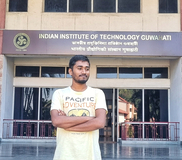 Mr. Devendra K Chaudhari Mr. Devendra K Chaudhari |
 Mr. Pradheep Narayanan Mr. Pradheep Narayanan |
 |
Mr. Arkaprava De |
||
| Thesis title | :: | Development of Lattice Boltzmann Solver with Efficient Interface Tracking during Flow past Moving Bodies | Defended on | :: | November 27, 2023 |
 |
Ms. Priyakhee Kachari |
||
| Thesis title | :: | Development of Lattice Boltzmann Solver with Local Grid Refinement | Defended on | :: | June 24, 2024 |
 |
Mr. Piyush |
||
| Thesis title | :: | Development of Lattice Boltzmann Solver for Shallow Water Flows | Defended on | :: | June 24, 2024 |
 |
Mr. K Rohit Srivastav |
||
| Thesis title | :: | Numerical Investigation of Supercritical Minichannel Heat Sink and Design of Experimental Facility | Defended on | :: | June 11, 2025 |

| Mr. Devendra K Chaudhari |
||
| Thesis title | :: | Development of Lattice Boltzmann Solver with Enhanced Collision Operator | Defended on | :: | June 11, 2025 |

| Mr. Pradheep Narayanan |
||
| Thesis title | :: | Lattice Boltzmann Simulation of Flow Past Moving Objects with Local Mesh Refinement | Defended on | :: | June 13, 2025 |
Continuing Masters' students
 Mr. Kothapalli Pavan Mr. Kothapalli Pavan |
Completed UG projects
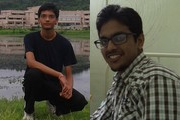 Mr. Avnish Goyal Mr. Avnish GoyalMr. Ashish Soni |
 Mr. Saurav Mohanty Mr. Saurav MohantyMr. Roushan Sinha |
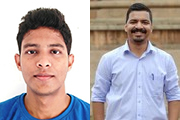 Mr. Gunajeet Das Mr. Gunajeet DasMr. Kishor Malakar |
 Mr. Yash Kulkarni Mr. Yash KulkarniMr. Yashpal Singh |
 Mr. Hridyansh Verma Mr. Hridyansh VermaMr. Namal Pal |
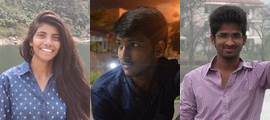 Ms. Galla Lahari Ms. Galla LahariMr. Pradeep Kumar G Mr. Sapavath Amarnath |
...missing a few 🙁 |
|
Continuing UG projects
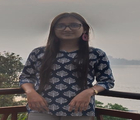 Ms. Bhawana Ms. Bhawana |
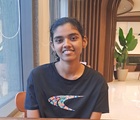 Ms. AVSN Sriya Ms. AVSN Sriya |
 Mr. V Sanjay Mr. V Sanjay |
Projects staffs
 Mr. Pranab Sutradhar Mr. Pranab Sutradhar |
 Dr. Kiran Saikia Dr. Kiran Saikia |
 Mr. Aritra Mukherjee Mr. Aritra Mukherjee |
Summer interns
 Mr. Debendra N Sarkar Mr. Debendra N Sarkar |
 Mr. Gunajeet Das Mr. Gunajeet Das |
 Mr. Karnajit Debnath Mr. Karnajit Debnath |
 Ms. Anindita A Phukan Ms. Anindita A Phukan |
 Mr. Dhritiman Dutta Mr. Dhritiman Dutta |
 Mr. Aveerup Deb Mr. Aveerup Deb |
 Mr. Subham Pokhrel Mr. Subham Pokhrel |
||
 Mr. Roshan Mani Rao Mr. Roshan Mani Rao |
 Mr. Mohit Hasija Mr. Mohit Hasija |
 Mr. Sudarshan Boruah Mr. Sudarshan Boruah |
 Mr. Biswarga Bidit Tamuli Mr. Biswarga Bidit Tamuli |
...missing a few 🙁 |
||||
PG projects at IIEST Shibpur
Dr. Sarbendu Roy
Thermodynamic Analysis of A High-capacity Pulverized Coal-fired Steam Generator (2010) (Co-supervisor: Prof. Somnath Chakraborty)Dr. Samiran Samanta
Modeling of A Solar-assisted LiBr-water Vapour Absorption Refrigeration System for Domestic Use (2011) (Co-supervisor: Prof. Sujoy K Saha)Dr. Kamaljyoti Talukdar
Design and Analysis of Vapour Absorption Refrigeration System in Conjunction with Solar Photovoltaic Cells (2012) (Co-supervisor: Dr. Aritra Ganguly)
UG projects at IIEST Shibpur
S Das & S Dutta
Study and Analysis of Flashing-driven Natural Circulation Loop (2009)HK Mandal, J Biswas & A Biswas
Analysis of Solar-assisted Vapour Absorption based Air Conditioning System (2010)A Chaudhuri, S De & S Saha
Analysis of Natural Circulation Loop with Multiple Parallel Channels (2011)N Lo, DP Karmakar & A Mallik
Design of a Solar-assisted Chiller for Domestic Use (2011)S Saha, S Ghosh & S Chakraborty
Analysis of Water-Lithium Bromide based Absorption Refrigeration System for Domestic Air-conditioning (2012)A Dutta, S Mukherjee & A Moitra
Analysis of Magnetic Refrigeration System for Room Temperature Applications (2012)


